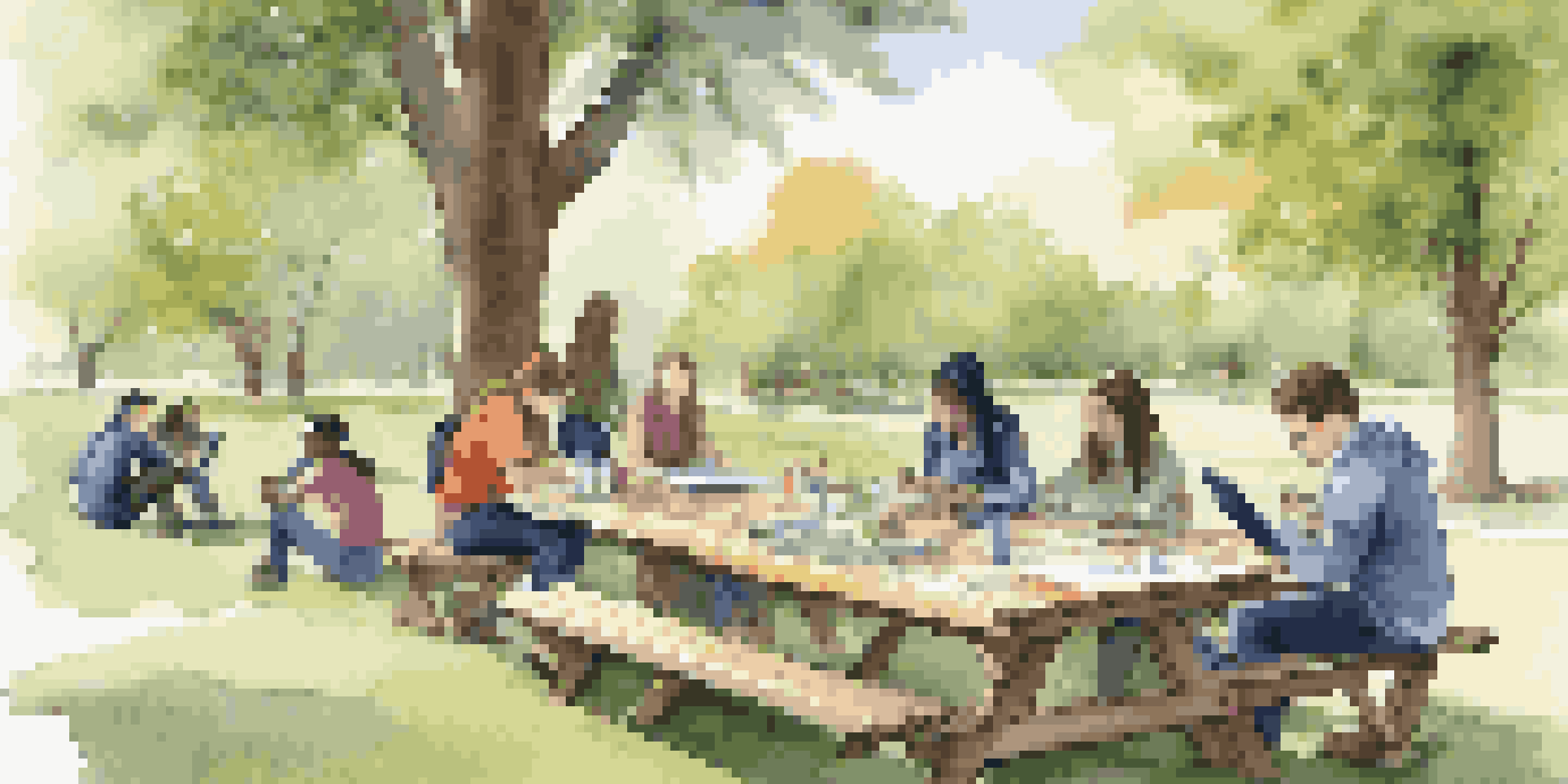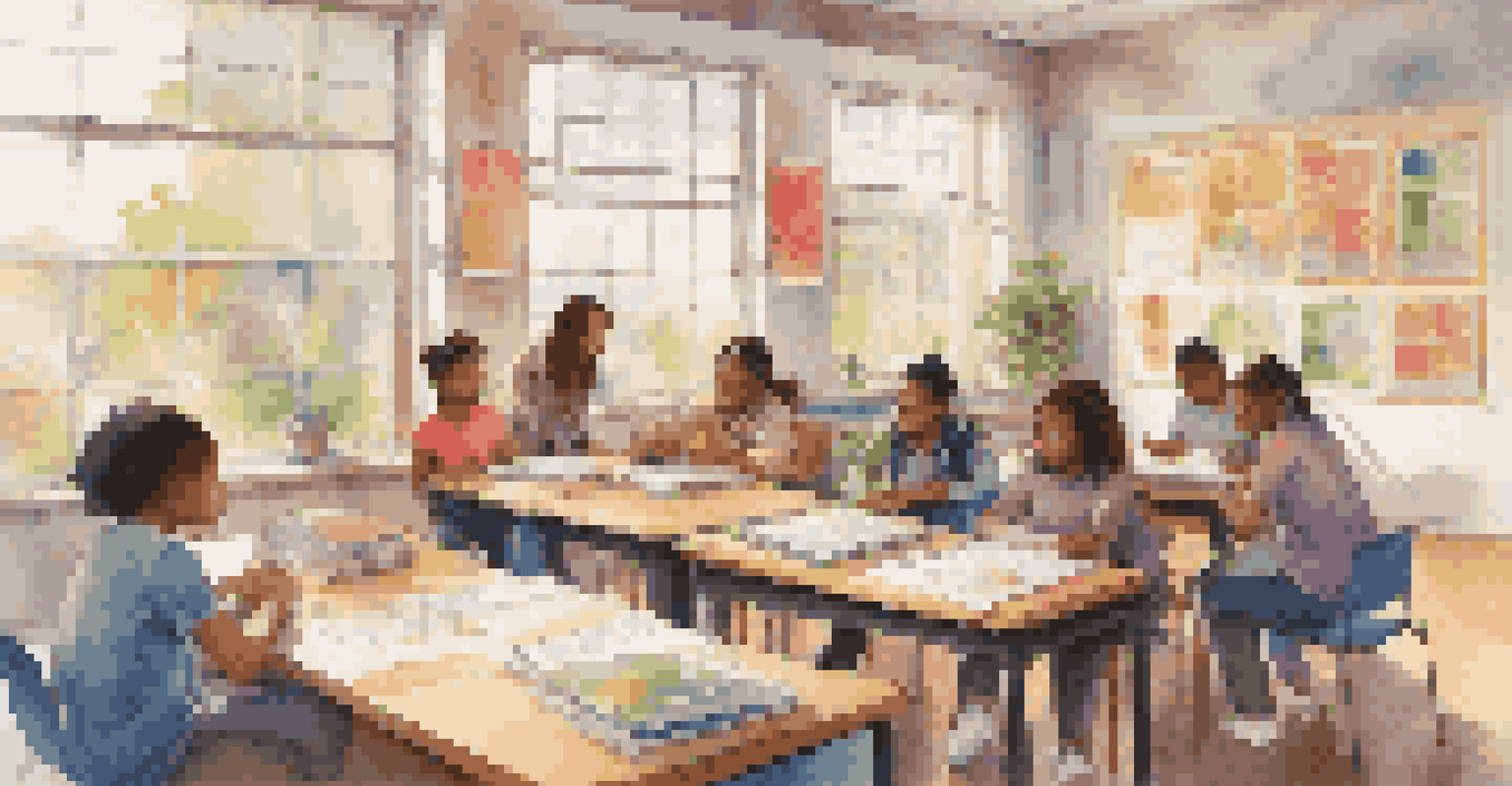Building Resilience in Students Through Collaborative Learning

Understanding Resilience and Its Importance for Students
Resilience is the ability to bounce back from challenges and setbacks, a skill that is increasingly vital in today's fast-paced world. For students, developing this trait can lead to improved academic performance and better emotional health. It equips them to face difficulties with a positive mindset, fostering a sense of control over their learning experience.
Resilience is not a long race; it is many short races one after the other.
In the classroom, resilient students are more likely to engage with their peers, seek help when needed, and persist in the face of adversity. This not only benefits their personal growth but also contributes to a supportive learning environment. Teachers play a crucial role in nurturing resilience by creating opportunities for students to overcome challenges together.
Ultimately, building resilience is not just about individual strength; it's about cultivating a community where students feel safe to take risks and learn from their mistakes. This foundation sets the stage for collaborative learning, which can significantly enhance resilience in students.
The Role of Collaborative Learning in Building Resilience
Collaborative learning is an educational approach that emphasizes group work, allowing students to learn from one another. By working together, students face challenges collectively, which can enhance their problem-solving skills and boost their confidence. This shared experience not only strengthens their academic abilities but also fosters emotional connections among peers.

When students collaborate, they learn to communicate effectively, listen actively, and respect diverse perspectives. These interpersonal skills are essential for resilience, as they enable students to navigate conflicts and support one another through difficulties. In essence, collaborative learning cultivates a sense of belonging, making students feel valued and understood.
Resilience Empowers Student Growth
Developing resilience helps students improve academically and emotionally, enabling them to face challenges with a positive mindset.
Research has shown that students who engage in collaborative learning are better equipped to handle stress and setbacks. The encouragement and support they receive from their peers can make a significant difference in their ability to persevere in challenging situations.
Creating Effective Collaborative Learning Environments
To foster resilience through collaborative learning, educators must create an inclusive and supportive environment. This involves establishing clear guidelines for group interactions and ensuring that every student feels valued. When students know their contributions are important, they are more likely to engage actively in the learning process.
Alone we can do so little; together we can do so much.
Diverse group compositions can also enhance collaborative learning. By mixing students with different skills and backgrounds, educators can encourage peer learning and expose students to various viewpoints. This diversity not only enriches the learning experience but also helps students develop empathy and understanding.
Furthermore, providing structured activities that require teamwork can help students practice resilience in real-time. Whether it's through project-based assignments or problem-solving challenges, these activities encourage students to collaborate, communicate, and tackle obstacles together.
Encouraging Growth Mindset Through Collaboration
A growth mindset—the belief that abilities can be developed through dedication and hard work—is essential for resilience. Collaborative learning environments can help cultivate this mindset by allowing students to see that effort and persistence lead to improvement. When students learn together, they can witness each other's progress, reinforcing the idea that challenges are opportunities for growth.
In group settings, students often encounter diverse approaches to problem-solving. This exposure can inspire them to embrace challenges and learn from their peers, rather than fearing failure. Celebrating small victories within the group also boosts morale and motivates students to keep pushing their limits.
Collaboration Enhances Learning
Collaborative learning fosters essential interpersonal skills and emotional connections, which are vital for building resilience.
By fostering a growth mindset through collaboration, students become more willing to take risks and learn from their mistakes. This shift in perspective not only enhances their academic success but also strengthens their resilience in everyday life.
The Importance of Reflection in Collaborative Learning
Reflection is a critical component of the learning process, allowing students to think critically about their experiences. In collaborative settings, encouraging students to reflect on their group dynamics and individual contributions can deepen their understanding of resilience. By discussing what worked well and what didn’t, they can identify strategies for improvement.
This practice promotes self-awareness and accountability, as students recognize their roles in both successes and challenges. Additionally, reflecting on their collaborative experiences helps students appreciate the value of teamwork, reinforcing their resilience as they learn to navigate group dynamics more effectively.
Moreover, reflection can serve as a powerful tool for emotional regulation. By articulating their feelings and experiences, students can process challenges and develop coping strategies, making them better equipped to handle future setbacks.
Assessing Resilience in Collaborative Learning Settings
To understand the effectiveness of collaborative learning in building resilience, educators must assess students' progress. This can involve both formal assessments, such as surveys or reflections, and informal observations during group activities. By gathering feedback, teachers can gain insights into how well students are developing resilience and identify areas for improvement.
Peer assessments can also play a significant role in this process. Allowing students to evaluate each other's contributions fosters accountability and encourages constructive feedback. This not only enhances their collaborative skills but also empowers them to take ownership of their learning journey.
Reflection Strengthens Resilience
Encouraging reflection in collaborative settings promotes self-awareness and helps students develop coping strategies for future setbacks.
Ultimately, assessing resilience in collaborative learning settings is about more than just academic achievements. It’s about recognizing the social and emotional growth that occurs when students work together, helping them become more resilient individuals.
Conclusion: Fostering Resilient Learners for the Future
Building resilience in students through collaborative learning is a powerful strategy for preparing them for future challenges. By working together, students not only enhance their academic skills but also develop essential life skills such as communication, empathy, and problem-solving. These skills are invaluable in an ever-changing world.
Educators play a crucial role in creating an environment that nurtures resilience through collaboration. By fostering inclusive group dynamics and encouraging reflection, they can empower students to embrace challenges and learn from their experiences. This approach not only benefits individual students but also strengthens the overall classroom community.

As we look toward the future, it’s clear that resilience will be a key factor in students' success. By prioritizing collaborative learning, we can equip our students with the tools they need to thrive, both academically and personally.